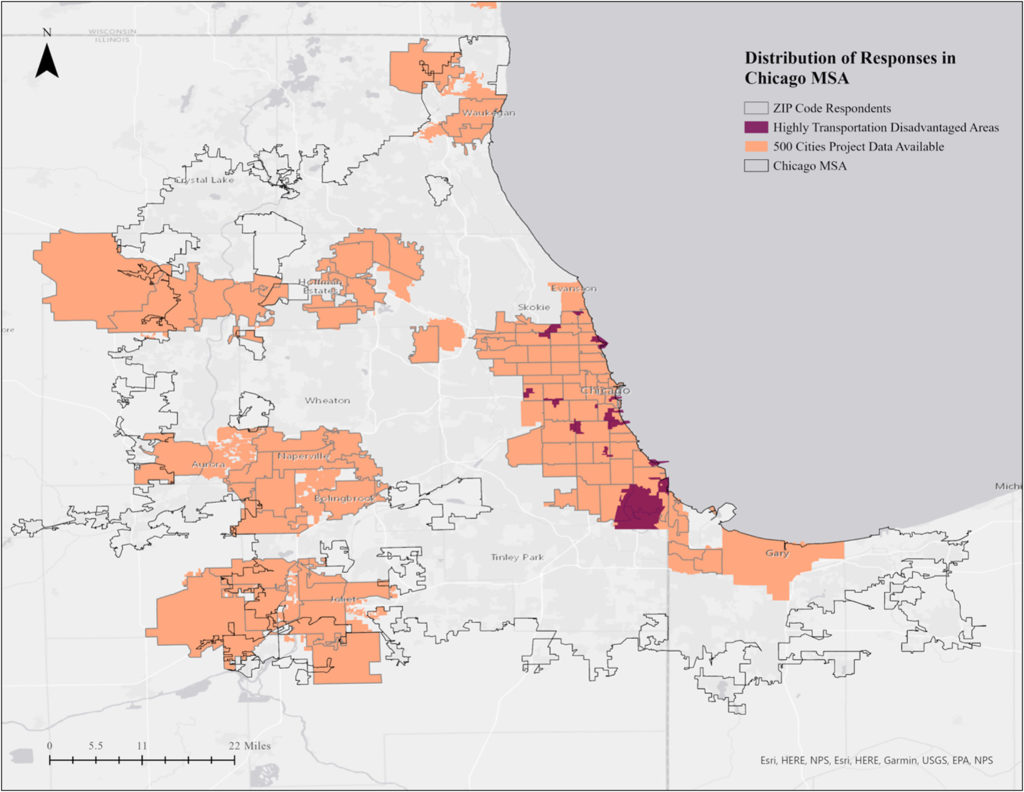
CCAT Research Published in Journal of Transportation & Health
The deployment of automated vehicles (AVs) may have a profound impact on mobility and safety. This includes increased mobility options for underserved communities and reduced traffic and travel costs. It isn’t all necessarily good news, though, according to a CCAT research project that was recently published in the Journal of Transportation & Health. Deployment of these shared AVs may lead to an increase in non-communicable diseases (NCD) due to a reduction in active travel and physical activity.
‘Ridesharing, Active Travel Behavior, and Personal Health: Implications for Shared Autonomous Vehicles‘, a research project led by Dr. Konstantina “Nadia” Gkritza, assesses the relationship between ridesharing (as a proxy for shared travel behavior), and active travel behavior (often measured as the number of trips made by walking or biking), and identifies personal health-related outcomes expected due to the adoption of shared AVs (SAVs). Dr. Gkritza and her team at Purdue University, including CCAT Ph.D. Student Lisa Lorena Losada Rojas, used a combination of secondary data and online surveys from people in the Chicago area to understand the adoption of AVs.

“We have been very fortunate to receive generous support from CCAT to improve our understanding of who will opt to use AVs in the future and how many will shift from transit to shared autonomous vehicles”
Konstantina “Nadia” Gkritza, CCAT Principal Investigator
Segmentation analysis classified survey respondents into five, distinct AV adoption levels: innovators, early adopters, early majority, late majority, and laggards. Innovators are those who want to first try an innovation, are adventurous, and are interested in new ideas. Early adopters are known as opinion leaders who embrace change opportunities. Early majority is characterized by people who rarely lead, but they do adopt new ideas before an average person. The next category is the late majority, which is skeptical of change, and will adopt an innovation only after the majority has tried it. Finally, laggards are the most skeptical of change. The level of adoption is associated with a combination of individual and location-based characteristics, some of which are related to active travel behavior.

The above figure shows the distribution of ZIP codes where survey respondents resided. There are zip codes that have more than one respondent participating in the survey. The respondents reside in the downtown area of Chicago, as well as suburban areas and small towns that are within Chicago metropolitan statistical area. This figure also shows the ZIP codes that are classified as highly transportation disadvantaged areas and the areas where the 500 Cities project data for the health-related variables were available.

“Our findings could help state and local governments recognize the importance of policies that stimulate AVs’ deployment where possible societal externalities can be offset.”
Lisa Lorena Losada Rojas, CCAT PhD Student
It was found that respondents in the high adopter categories are generally lacking opportunities for active travel and show high levels of NCDs in the ZIP codes where they reside. Some of the major takeaways from this research find that:
- Both individual and location-based characteristics influence AV adoption
- Male, young, and children in households are associated with higher AV adoption levels
- Respondents residing in areas with more green space are likely to be innovators
- Early adopters reside in areas that lack opportunities for active travel
- AV implementation based on a propensity to adopt might have adverse health outcomes
The team came to the conclusion that AV implementation based only on the propensity to adoption might result in adverse health outcomes. They hope their results can inform planning strategies and health interventions so as to avoid a massive shift from active travel modes to AVs and mitigate any other adverse impacts on public health that this technology might bring. The Journal of Transportation & Health is an open access journal that, according to its Editor-in-chief, “is devoted to publishing research that advances our knowledge on the many interactions between transport and health and the policies that affect these”. Interested readers can access the paper online.
Related research:
